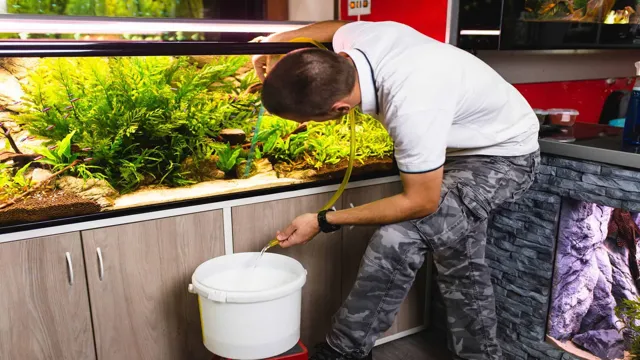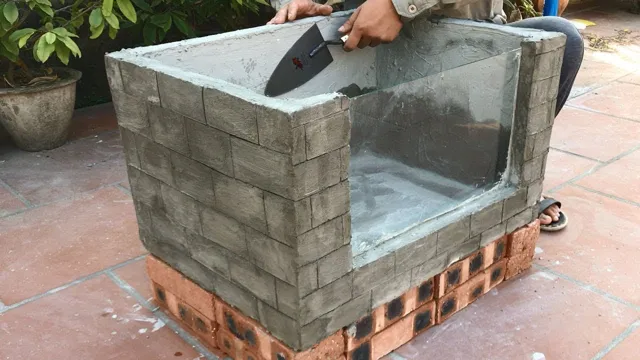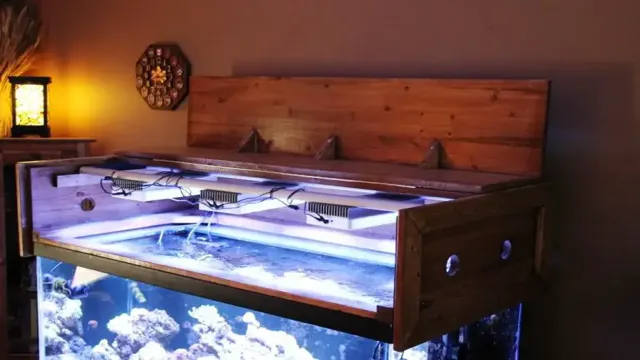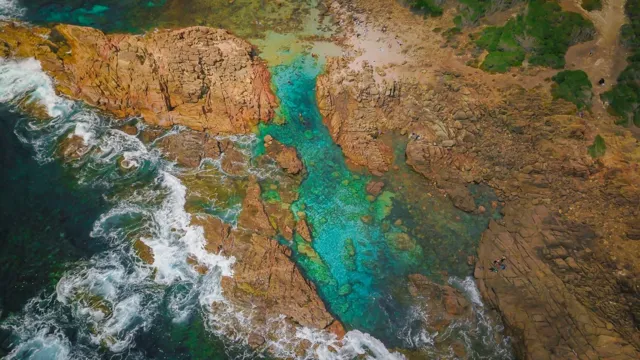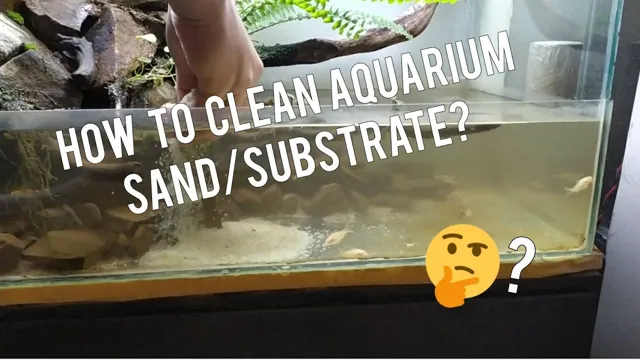Maintaining a clean and healthy saltwater fish aquarium is essential for the well-being of your aquatic pets. However, cleaning your aquarium may seem like a daunting task that requires several hours of hard work. But the truth is, cleaning your saltwater aquarium is not as complicated as it may seem.
With a few simple steps, you can keep your aquarium sparkling clean, while also ensuring the health and happiness of your fish. In this blog, we will walk you through the simple steps to clean your saltwater fish aquarium without any hassle. So, put on your aquarium gloves and get ready to dive into the exciting world of aquarium maintenance!
Gather the Necessary Supplies for Cleaning
When it comes to cleaning a saltwater fish aquarium, it’s essential to have all the necessary supplies at hand. First and foremost, you’ll need a siphon or gravel vacuum to remove any debris or uneaten food from the substrate and rocks. A fishnet will also come in handy to catch any fish that may be causing trouble while you clean.
A glass scraper can help you remove any algae buildup on the sides of the tank, while a soft-bristled brush will be useful for cleaning decorations and rocks. Additionally, you’ll need a clean bucket or two for holding water during the cleaning process, as well as an aquarium water conditioner to add back into the tank once you’ve finished cleaning. By having all these supplies ready and at hand, you’ll be able to clean your saltwater fish aquarium with ease and efficiency.
Prepare a Bucket of Clean Water
If you’re planning on cleaning your home, it’s important to have all the necessary supplies on hand. One of the most important items you’ll need is a bucket of clean water. This will be used to rinse off sponges or rags as you clean, ensuring that you’re not spreading dirt and grime around your home.
To prepare a bucket of clean water, start by gathering all the supplies you’ll need. You’ll obviously need a bucket, but make sure it’s clean and free of any dirt or debris. Next, you’ll need to fill the bucket with clean water.
If you have a filtration system, use that to ensure the water is as pure as possible. Otherwise, you can just use tap water. Finally, make sure the bucket is easily accessible while you clean.
You don’t want to have to go back and forth to refill it constantly. With a bucket of clean water at your ready, you’ll be able to clean your home more efficiently and effectively.
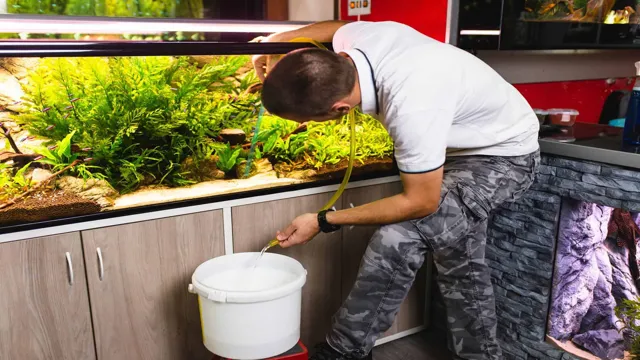
Get a Reliable Scrubber or Algae Pad
When it comes to keeping your aquarium clean and healthy, owning a reliable scrubber or algae pad is a must-have. These products are designed to keep your tank’s walls free from algae buildup and other forms of debris. Before you begin cleaning, it’s essential to gather all the necessary supplies, including a scrubber or algae pad, a bucket, towels, and a siphon hose.
Don’t forget to disconnect your aquarium’s electrical equipment before cleaning. Once you have everything you need, you can start to scrub the walls gently to remove any buildup. Some algae pads may come with attachments like handles or extendable rods to make cleaning more comfortable.
As these products are essential for maintaining the cleanliness of your aquarium, don’t skimp on quality. Investing in a reliable scrubber or algae pad can help you ensure that your aquarium stays healthy and well-maintained over time.
Start Cleaning the Aquarium
If you’re wondering how to clean a saltwater fish aquarium, the first step is to start cleaning the tank itself. Turn off any equipment such as pumps or heaters and unplug them from the power source. Remove any decorations or plants from the aquarium and set them aside in a separate container.
Using a specialized aquarium scraper or a clean sponge, gently scrape away any algae or other buildup from the sides of the tank. Then, using a siphon or an aquarium vacuum, remove about 25% of the water from the tank, being careful not to disturb the sand or gravel. Replace the water with fresh, pre-mixed saltwater.
Remember to rinse all aquarium equipment with fresh water before returning them to the tank. With a bit of care, cleaning your saltwater aquarium can be a simple and routine task that helps keep your fish healthy and happy! (See Also: How to Put Aquarium Lights on Timer: A Comprehensive Guide for Beginners)
Remove Algae and Debris from the Glass Walls
Cleaning an aquarium is a crucial task for the well-being of your fish and plants. The first step in cleaning your aquarium is to remove algae and debris from the glass walls. Algae is a common problem for aquarium owners, but it is easy to remove with a good algae scraper.
There are many types of algae scrapers available in the market, from hand-held plastic scrapers to magnetic scrapers that can be operated from outside the aquarium. Choose the one that suits your needs. Once you have selected the algae scraper, start cleaning the glass walls by gently scrubbing the algae.
Make sure not to apply too much force, as it might scratch the glass. Debris, on the other hand, includes uneaten food particles, dead plants, and fish waste. It can be removed by using a siphon to suck it up from the substrate.
This will prevent the accumulation of debris, which can lead to harmful bacteria growth and water quality issues. Regular cleaning of the aquarium glass walls will keep your aquarium looking clean and vibrant, and also help keep your fish healthy.
Vacuum Any Loose Debris from the Gravel or Sand Bed
Cleaning an aquarium is not only essential for the health of your fish, but it’s also a great way to keep your tank looking beautiful. One of the first steps to start cleaning your aquarium is to vacuum any loose debris from the gravel or sand bed. This can be done using an aquarium gravel vacuum or siphon.
Simply place the narrow end of the siphon into the aquarium water and let the end with the bulb hang outside the tank. Pump the bulb to start the flow of water, and then place the end with the bulb back into the aquarium water. As the water flows through the siphon, it will also pick up any loose debris from the gravel or sand bed, leaving it clean and debris-free.
It’s important to vacuum the gravel or sand bed regularly. If debris, uneaten food, and waste are allowed to accumulate in the substrate, they can release harmful toxins that can be harmful to your fish. By vacuuming the substrate regularly, you’ll remove excess waste and promote a healthier environment for your fish to thrive.
So, if you’re looking to start cleaning your aquarium, begin by vacuuming any loose debris from the gravel or sand bed. Your fish will thank you for it!
Use a Siphon to Remove 20% of the Water
Aquarium cleaning can be a daunting task, especially if the tank is large. If you’re wondering where to start, using a siphon is an excellent option. A siphon is a simple device that allows you to remove water from the aquarium while keeping everything else in place.
To use a siphon, start by placing the end of the tube in the tank and the other in a bucket. Once you start sucking on the tube (yes, with your mouth), the water will begin to flow out. Keep sucking until the water level reaches the desired level, which should be about 20% of the water in the tank.
This will remove some of the waste and debris that have built up, making it easier to clean the tank properly. After you’re done siphoning, it’s time to start using an aquarium gravel cleaner to clean the substrate. Remember to go slow and take your time, being careful not to scare the fish or disturb the decorations.
Scrub the Ornaments and Rocks
When it comes to maintaining a healthy aquarium, one of the essential tasks is cleaning it properly. And to start the cleaning process, the first thing you need to do is scrub the ornaments and rocks in your aquarium. Over time, algae and other debris may accumulate on these surfaces, which can affect the water quality.
Therefore, it’s crucial to remove them for the health of your aquatic pets. To do this, you can use a scrubbing brush or a dedicated aquarium cleaning tool to gently scrub the surfaces. Make sure to be thorough but gentle to avoid damaging any delicate structures or ornaments. (See Also: How to Lower pH in Aquarium for Crystal Red Shrimp: A Step-by-Step Guide)
After all the ornaments and rocks have been scrubbed, clean them with water before placing them back in the aquarium. This step is crucial since any remaining cleaning solution may have adverse effects on the aquatic life. By regularly scrubbing the ornaments and rocks in your aquarium, you can ensure a healthy and clean environment for your aquatic pets.
Clean the Protein Skimmer and Filter
One important step in cleaning an aquarium is to clean both the protein skimmer and the filter. These two components play a crucial role in ensuring the water in the aquarium stays clean and healthy for the fish and other creatures that live in it. The protein skimmer helps to remove organic waste and other particles that can build up in the water over time.
This is essential because excessive amounts of organic waste can lead to harmful toxins and poor water quality, which can be deadly for fish and other aquatic life. Meanwhile, the filter helps to remove debris, uneaten food, and other impurities that can accumulate in the water. Neglecting these components can lead to significant problems within the aquarium, such as the growth of harmful bacteria and algae, which can cause health issues for your pets.
Therefore, it’s crucial to include cleaning the protein skimmer and filter as part of your routine aquarium maintenance.
Refill the Aquarium with Clean Water
Cleaning a saltwater fish aquarium involves various steps, and one of the last crucial steps is refilling the aquarium with fresh, clean water. It’s essential to change almost all of the water to remove any traces of dirt, debris, and contaminants. Before refilling the aquarium, it’s best to test the newly mixed water with a saltwater refractometer to ensure that it matches the ideal salinity range for the fish you keep.
After testing, you can begin pouring new water into the tank slowly, avoiding any sudden movements or large splashes. Once the tank is full, switch on all the equipment, including the heater and light, to acclimate the fish to the new water. Check the temperature and specific gravity for the next few days, making sure they’re stable within the recommended levels.
With proper refilling and maintenance, your saltwater fish aquarium can thrive while offering a beautiful home for your fish to enjoy.
Add Clean Saltwater to the Aquarium
When it comes to maintaining a healthy aquarium, refilling it with clean saltwater is crucial. Begin by preparing a batch of fresh saltwater, making sure to use quality salt mix and follow the instructions carefully. Next, remove any debris or waste at the bottom of the tank and perform a partial water change by siphoning out about 25% of the old water.
Once this is done, you can start slowly pouring in the new saltwater, making sure to take your time and avoid disturbing the tank’s inhabitants. Keep an eye on the salinity levels using a hydrometer or refractometer and adjust as needed. The key is to make the transition as seamless as possible to prevent stress on your fish and other creatures.
Regular water changes like this help keep your aquarium environment healthy and balanced, promoting the growth and wellbeing of its aquatic inhabitants.
Turn on the Equipment and Maintain the Water Chemistry
When it comes to maintaining your aquarium, refilling it with clean water is an essential task that you should not overlook. Over time, the water in your aquarium can become contaminated with various pollutants, such as fish waste and uneaten food, which can harm your fish and other aquatic creatures. Therefore, you need to ensure that you replace a portion of the water regularly to maintain a healthy environment for your aquatic pets.
Start by turning off all electrical equipment, such as filters and heaters, to ensure that you don’t damage them or cause a short circuit. Then, remove a portion of the water from your aquarium, ideally around 20-25%, using a siphon or a bucket. Once you have removed the old water, replenish the aquarium with clean, fresh water. (See Also: How to Create Mounds in Your Aquarium: Step-by-Step Guide for an Aesthetic Underwater Landscape)
Make sure that the water is at the right temperature and pH level for your fish to maintain their health. After refilling the aquarium, turn on all the equipment and monitor the water chemistry closely for any sudden changes. By refilling your aquarium with clean water regularly, you can keep your aquatic pets happy and healthy.
Conclusion
In conclusion, cleaning a saltwater fish aquarium requires a combination of elbow grease, patience, and a little bit of science. You’ll need to maintain a consistent water chemistry, monitor your algae growth, and keep a close eye on your fish’s health. But fear not, with a little bit of effort, you’ll be rewarded with a beautiful and thriving aquarium that will bring a touch of the ocean into your own home.
So roll up your sleeves, channel your inner marine biologist, and dive in!”
FAQs
How often should I clean my saltwater fish aquarium?
It is recommended to clean your saltwater fish aquarium at least once a month.
What equipment do I need to clean my saltwater fish aquarium?
To clean your saltwater fish aquarium, you will need a siphon, a bucket, algae scraper, and a new filter.
Can I use tap water to clean my saltwater fish aquarium?
No, you should never use tap water to clean your saltwater fish aquarium as it contains harmful chemicals. You should use distilled or reverse osmosis water instead.
How do I remove excess algae from my saltwater fish aquarium?
You can use an algae scraper or a magnet cleaner to remove excess algae from your saltwater fish aquarium.
Can I clean my saltwater fish aquarium with vinegar?
No, you should never clean your saltwater fish aquarium with vinegar as it is harmful to the fish. You should use a specialized aquarium cleaner instead.
How long should I let my aquarium water settle after cleaning?
It is recommended to let your aquarium water settle for at least 24 hours after cleaning before adding any fish or plants.
How do I maintain the correct salinity level in my saltwater fish aquarium?
You can maintain the correct salinity level in your saltwater fish aquarium by regularly testing it with a salinity meter or a hydrometer and adding salt mix if needed.

